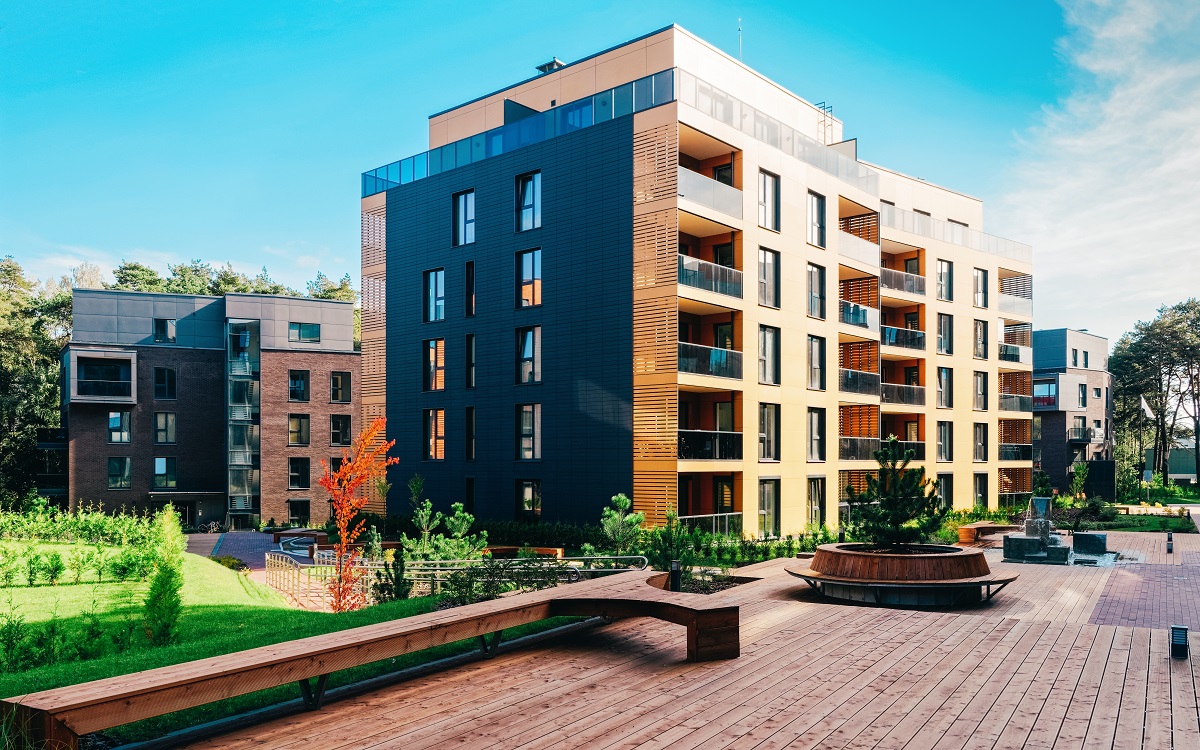This diversity in lifestyles is the fundamental reason for the existence of different housing asset classes: specialized housing types that serve specific user groups. Single-family detached homes, senior living, and student housing are all examples of real estate asset classes that are purpose-built for the lifestyles of those who live in them. Said more simply, one’s stage of life defines both what kind of housing one needs and where that housing needs to be. Asset classes meet these diverse needs.
Although there is a wide variety of existing asset classes, the real estate industry and capital markets have long failed to recognize the emergence of a growing demographic subgroup that deserves its own asset class. In 2014, Millennials became a larger population subgroup than Baby Boomers. With college-educated members earning a median income of $56,000 a year, this generation experiences the lowest marriage rates of current generational cohorts and the highest rates of living at home with their parents between the ages of 25 and 37. As this generation makes up an ever-larger percentage of the U.S. population, its members are encountering older housing stock built for a vastly different lifestyle and price range.
Single, middle-income professionals who make up the urban workforce are hard pressed to find affordable, private accommodations in the high-value real estate markets they call home. These urban residents, lauded over the COVID-19 pandemic as the “essential workers” who kept our hospitals, schools, and grocery stores running, have grown to become a substantial share of every metro area’s population. This demographic is fundamentally attracted to urban areas, where it can find social, professional, and economic opportunity.
Cities are forges of potent connections; urban centers are where the desires of individuals meet the needs of companies and organizations. As places of support and opportunity, cities will continue to attract ambitious, early-career residents for years to come. At the life stage of the average early-career professional, the ideal housing type is flexible, affordable, and centrally located. Unfortunately, such housing is in short supply and, consequently, hard to find.
The fundamental demographics of the country have changed dramatically, and a new bracket is emerging with specific needs, a disposable income, and no purpose-built housing to serve it. This is a substantial untapped economic opportunity for forward-thinking investors and developers who help provide cities with affordable housing without relying upon public subsidy. Capital markets and real estate developers should recognize this market shift by allocating capital to and designing housing types specifically for urban workforce housing and single urban dwellers.
The Demographic Change
The traditional image of the American household is stamped into the country’s national memory by echoes of 1950s media. TV shows like Leave it to Beaver, Norman Rockwell paintings and iconic appliance advertisements all paint the picture of an ideal life in a nuclear suburban family. While many American households may have looked like this in midcentury America, most households live very differently today.

The typical contemporary American household structure has changed substantially since the mid-1900s.
In 2018, a mere 30% of households were a married couple with at least one child. Census data show a steady increase in the average age of marriage since the 1970s, and marriage rates are generally on the decline. While younger adults were busy getting married and starting traditional nuclear families midcentury, today the same section of the American population (usually from ages 23 to 38) are putting off marriage until later in life. As a result, a longer period of people’s lives is spent single. There are now more 23-38-year-olds living with roommates than with children.
As this demographic shift fundamentally changes the look of the American household, culture, industry, and technology have led to a massive cultural attraction to urban areas. Tech-industry powered metros such as the San Francisco Bay Area, Seattle, and Boston provide economic opportunity for this demographic with their concentrations of tech industry players. Urban areas continue to be the centers of career optionality for early-career professionals, as they have been for centuries.
Recently, the COVID-19 pandemic cast doubt on the continued vitality of these areas, as the economic opportunity provided by major industries appeared no longer tied to geography. Prominent metros are more than just places of career opportunity for the urban workforce, however. People choose to locate in cities because of the promise of cultural opportunities, the chance to meet interesting people, and proximity to entertainment and cultural centers. Eric Willett, CBRE’s director of research, states in a recent New York Times article that young tech workers who “left urban centers in large numbers” at the beginning of the pandemic are the exact group of people he and his team are “increasingly seeing move back.”
This urban workforce is gradually changing the socioeconomic landscape in America. Economist Harry Holzer sees the category of work performed by the urban workforce as signs of the emergence of a new middle class, which saw a 5% increase in employment in a period of time in which the “old middle class” saw a 44% reduction. In other words, it would be wise to consider how the middle class is changing rather than simply shrinking.
Despite its tremendous market potential, however, this emerging middle class is frequently overlooked by policymakers and investors. This represents a large, untapped market for real estate developers and a missed opportunity to help alleviate the housing crisis in the Bay Area.
A Predictable and Stable Tenant Base
Any urban economy is fundamentally built on the urban workforce. Those who have come to be known as “essential workers” during the COVID-19 pandemic are a prime example of this: nurses, teachers, transportation and logistics workers, and paramedics are core aspects of the function of any city, and these jobs are consequently not going anywhere any time soon. This clientele is stable and ever-present in urban areas across the US, in high and low-cost cities alike.

The essential workforce is an ever-present engine of any urban economy.
As a developer with deep experience in the Bay Area, we have focused the following analysis on the specifics of this group in this geography. However, all signs indicate that these conclusions can be applied to urban markets across the United States.
The careers this demographic pursues tend to pay a rate that puts the worker between 80% and 120% of the area median income, or AMI. For example, the average Oakland OR nurse makes about $80,100, putting them just below $83,450, the Oakland AMI for individuals.
Some members of the urban workforce are occupied in jobs that can be performed remotely, such as those working in entry-level software engineering. Given a choice, even these workers tend to prefer cities for the social and professional connections they can make in them.
However, many single people making a median income in urban areas perform jobs that simply cannot be performed outside of a workplace environment. Nurses, firefighters, service workers and teachers must report to their place of work; it is very difficult to put out a housefire over Zoom. There are 962,563 people in the Bay Area making between $60K and $125K annually. Many of these people find it near impossible to find appropriate housing in their price range.
The urban workforce makes up a significant portion of the urban labor force. In the San Francisco-Oakland-Hayward metropolitan area, 32.42% of the labor force worked in fields commonly in the purview of the urban workforce in 2019. In this graphic, this is represented by Service Occupations, Production, Transportation and Material Moving Occupations, Education, Instruction and Library Occupations, Health Technologists and Technicians, and Community and Social Service Occupations.
Source: Data USA
With a discretionary income of around $40 a day, members of the urban workforce prioritize cost-effective solutions to daily needs to stretch their dollar and afford opportunities for leisure and recreation. With a legacy housing infrastructure designed for an entirely different resident profile, this demographic is often forced to spend too much for housing that does not appropriately serve its needs. This contributes to a severe shortage of housing affordable for this sizable group of people. 47% of renters in the Bay Area spent more than 30% of their incomes on housing in 2019, which classified them as “rent burdened” by Housing and Urban Development’s housing affordability standards. With rent making up a significant portion of a member of the urban workforce’s daily living expenses, they often look to housing that provides comfort and convenience at an affordable price. Such housing is in short supply due to chronic underinvestment.
Urban policy and real estate investors have been slow to adopt the idea of purpose-built housing for urban workforce professionals. This lack of imagination poses a serious constraint to providing an economically viable product type for a substantial population subset.
Economic Feasibility of Urban Workforce Housing
This asset class provides a massive and reliable market opportunity for allocators of capital. Conservative estimates place the unbuilt need for middle-income housing in the Bay Area region alone at over $200 billion. While subsidized affordable housing often serves a demographic making less than 60% of AMI, market-driven housing usually has no need (or qualification) for government subsidy. Capital markets are in a prime position to leverage this high-potential market opportunity and invest in market-rate housing types that serve this stable, middle-income demographic.
With a severe housing shortfall in the Bay Area, it is not possible to solve the housing crisis with subsidized housing alone. Investors are willing to devote capital to the issue, but they must be satisfied with the level of risk involved in the investment.
Traditionally, investors have been drawn to the high returns of luxury residential investments. Serving the high-income market may be profitable, but the luxury market is notoriously volatile. In 2020 with the onset of the COVID-19 pandemic, many luxury residences saw vacancy rates much higher than moderate income-serving complexes.

Luxury properties are gambles for investors; their glamorous image masks their high risk.
The glamorous image of luxury residential assets masks their high risk. Chasing trophy luxury property development is a gamble entirely dependent on lucking out on market cycle timing. In 2020, many prominent luxury properties in San Francisco had only 60-70% occupancy.
Investing in products within the price range of the urban workforce is a robust choice in a wide range of market conditions. For example, across Riaz Capital’s Oakland portfolio of 1,200 units serving middle-income individuals, pandemic conditions saw an average 95% occupancy and 94% rent collection rate from April 2020 to April 2021. These high occupancy and rent recovery rates are evidence of the urban workforce’s stability as a customer and the security of this subset of the population even in tough times. Urban workforce housing is an unfamiliar market to many investors, but the stability of its middle-income tenants preserves capital and generates consistent growth.
Committing capital to urban workforce housing is an investment in the provision of housing in a market that desperately needs it. This emerging asset class and the demographic it serves is a large, untapped market ineligible for public subsidy and yet underrecognized by investors looking for stable, safe investment opportunities.
Conclusion: The Promise of Urban Workforce Housing
Urban workforce housing carries a tremendous amount of promise: promise as another tool for tackling housing unaffordability, promise for housing a significant portion of the population in comfort, and promise for investors seeking a responsible and safe place for their capital to produce a reliable return.
Urban workforce housing is a model that can be built in existing neighborhoods as a key infill solution, capitalizing on proximity to transit. It can be produced quickly and at scale, often requiring no special zoning exemptions in existing municipalities and can be completed in half the time of the average San Francisco project. And through efficient building and potential zoning reform, urban workforce housing can play a large role in creating the unsubsidized, affordable-by-design housing the Bay Area wants and needs.
To truly realize this asset class in a market, however, it takes more than just identifying market opportunity. Entitlement and construction must be efficient, speedy and cost-effective. Potential investments must be high yield to attract ambitious capital. Predictable development processes can lower the cost of capital and, as a result, lead to a substantial scale-up of the development of accessible housing in high-cost urban metros. Standardized policies and bureaucratic procedures on the side of regulation are crucial to enabling housing production. The political and technical efficiencies long present in the suburban single family home industry can, and must, be applied to urban housing.


